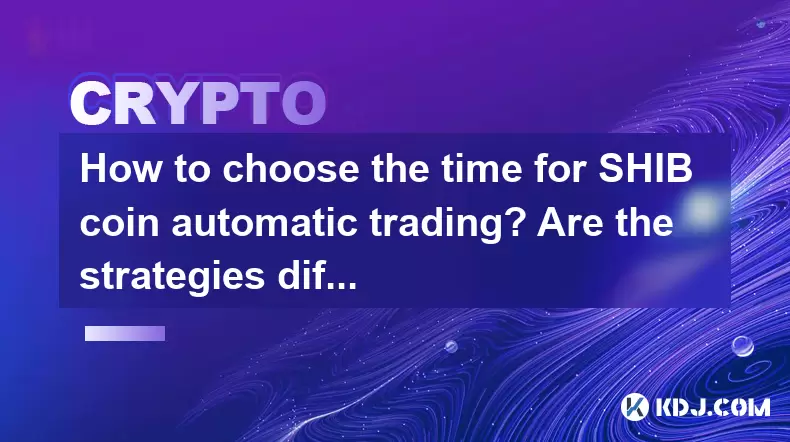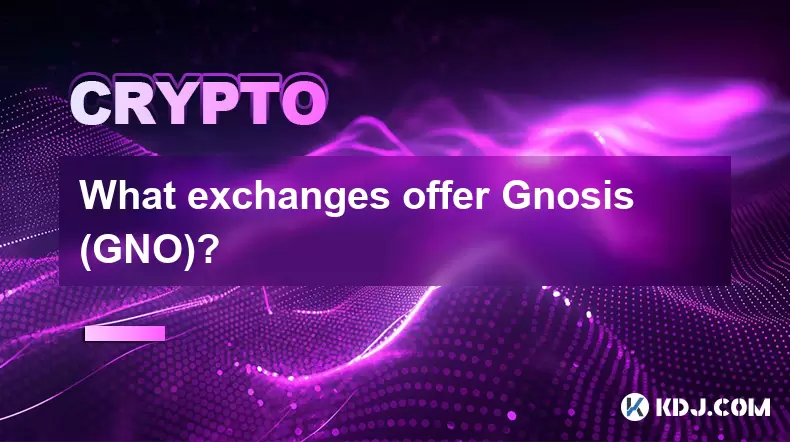-
 Bitcoin
Bitcoin $119000
-2.21% -
 Ethereum
Ethereum $4315
1.01% -
 XRP
XRP $3.151
-3.11% -
 Tether USDt
Tether USDt $0.0000
0.00% -
 BNB
BNB $808.5
-0.71% -
 Solana
Solana $175.8
-4.21% -
 USDC
USDC $0.9999
0.00% -
 Dogecoin
Dogecoin $0.2250
-3.92% -
 TRON
TRON $0.3469
1.77% -
 Cardano
Cardano $0.7818
-3.81% -
 Chainlink
Chainlink $21.47
-2.10% -
 Hyperliquid
Hyperliquid $43.30
-6.81% -
 Stellar
Stellar $0.4370
-2.84% -
 Sui
Sui $3.682
-4.40% -
 Bitcoin Cash
Bitcoin Cash $590.8
2.67% -
 Hedera
Hedera $0.2484
-5.20% -
 Ethena USDe
Ethena USDe $1.001
0.00% -
 Avalanche
Avalanche $23.10
-4.29% -
 Litecoin
Litecoin $119.2
-3.96% -
 Toncoin
Toncoin $3.409
0.90% -
 UNUS SED LEO
UNUS SED LEO $9.016
-1.29% -
 Shiba Inu
Shiba Inu $0.00001304
-3.82% -
 Uniswap
Uniswap $11.18
1.33% -
 Polkadot
Polkadot $3.913
-3.51% -
 Cronos
Cronos $0.1672
-3.08% -
 Dai
Dai $1.000
0.02% -
 Ethena
Ethena $0.7899
-4.70% -
 Bitget Token
Bitget Token $4.400
-1.23% -
 Pepe
Pepe $0.00001132
-5.93% -
 Monero
Monero $257.9
-6.44%
How to choose the time for SHIB coin automatic trading? Are the strategies different in bull and bear markets?
Choosing the right time for SHIB coin automatic trading is crucial, with strategies varying between bull and bear markets to maximize profits and minimize risks.
May 20, 2025 at 02:14 am

Choosing the right time for automatic trading of SHIB coin, also known as Shiba Inu, is crucial for maximizing profits and minimizing risks. Automatic trading, often facilitated by trading bots, can help traders execute trades based on predefined criteria without the need for constant monitoring. However, the timing of these trades can significantly impact the outcomes, especially in different market conditions like bull and bear markets. This article will explore how to choose the right time for SHIB coin automatic trading and whether the strategies differ in bull and bear markets.
Understanding SHIB Coin and Automatic Trading
SHIB coin, a decentralized cryptocurrency that gained popularity as a meme coin, operates on the Ethereum blockchain. Its price can be highly volatile, making it an attractive asset for traders looking to capitalize on short-term price movements. Automatic trading involves using algorithms to execute trades based on specific market conditions. These algorithms can be programmed to buy or sell SHIB coin when certain price thresholds are met, or when specific technical indicators signal a potential change in market direction.
Factors to Consider When Choosing Trading Times
Several factors should be considered when deciding on the best times for SHIB coin automatic trading. These include market volatility, trading volume, and the trader's risk tolerance.
Market Volatility: SHIB coin is known for its high volatility, which can present both opportunities and risks. Trading during periods of high volatility can lead to significant gains, but it also increases the risk of substantial losses. Traders should assess the current market conditions and set their trading parameters accordingly.
Trading Volume: Higher trading volumes often indicate increased market interest and liquidity, which can make it easier to execute trades at desired prices. Monitoring trading volumes can help traders identify optimal times for entering and exiting positions.
Risk Tolerance: Every trader has a different level of risk tolerance. Those with a higher risk tolerance might prefer to trade during more volatile periods, while those with a lower risk tolerance might opt for less volatile times. Understanding your risk tolerance is essential for setting appropriate trading parameters.
Strategies for Bull Markets
In a bull market, where prices are generally rising, the focus of automatic trading strategies often shifts towards capitalizing on upward trends. Here are some strategies that can be effective in a bull market:
Trend Following: This strategy involves setting the trading bot to buy SHIB coin when the price breaks above a certain moving average or when other technical indicators signal a continued upward trend. The bot can then be programmed to sell when the price reaches a predetermined profit target or when indicators suggest a potential reversal.
Breakout Trading: In a bull market, traders can program their bots to buy SHIB coin when it breaks out above key resistance levels. The bot can then sell when the price reaches a new high or when it shows signs of pulling back.
Momentum Trading: This strategy involves buying SHIB coin when its price momentum is strong and selling when it starts to weaken. Traders can use indicators like the Relative Strength Index (RSI) to identify momentum and set their trading parameters accordingly.
Strategies for Bear Markets
In a bear market, where prices are generally falling, the focus of automatic trading strategies often shifts towards minimizing losses and taking advantage of short-term rebounds. Here are some strategies that can be effective in a bear market:
Short Selling: Traders can program their bots to short sell SHIB coin when it breaks below key support levels. The bot can then cover the short position when the price reaches a predetermined target or when indicators suggest a potential rebound.
Rebound Trading: This strategy involves buying SHIB coin during short-term rebounds within a broader downtrend. Traders can set their bots to buy when the price bounces off a support level and sell when it reaches a resistance level or when the rebound appears to be fading.
Range Trading: In a bear market, SHIB coin may trade within a defined range. Traders can program their bots to buy at the lower end of the range and sell at the higher end, capitalizing on these oscillations.
Setting Up Automatic Trading for SHIB Coin
Setting up automatic trading for SHIB coin involves several steps, which can vary depending on the trading platform and bot being used. Here's a general guide on how to set up automatic trading:
Choose a Trading Platform: Select a reputable trading platform that supports SHIB coin and offers automatic trading capabilities. Popular options include Binance, Coinbase Pro, and Kraken.
Select a Trading Bot: Choose a trading bot that aligns with your trading strategy and risk tolerance. Some popular trading bots include 3Commas, Cryptohopper, and HaasOnline.
Configure Trading Parameters: Set up the trading parameters based on your chosen strategy. This may include setting entry and exit points, stop-loss levels, and profit targets. For example, if using a trend-following strategy in a bull market, you might set the bot to buy SHIB coin when the price breaks above a 50-day moving average and sell when it reaches a 10% profit.
Backtest the Strategy: Before going live, backtest your trading strategy using historical data to ensure it performs well under different market conditions. This can help you refine your parameters and improve the chances of success.
Monitor and Adjust: Once your automatic trading is live, monitor its performance and make adjustments as needed. Market conditions can change, and what works today may not work tomorrow. Regularly reviewing and tweaking your trading parameters can help optimize performance.
Differentiating Strategies Between Bull and Bear Markets
The key difference between automatic trading strategies in bull and bear markets lies in the direction of the market trend and the associated risks. In a bull market, strategies are generally more aggressive, focusing on capitalizing on upward trends and momentum. In contrast, bear market strategies are more conservative, aiming to minimize losses and take advantage of short-term rebounds.
Risk Management: In a bull market, traders might set wider stop-loss levels to allow for more volatility, while in a bear market, tighter stop-loss levels can help limit potential losses.
Profit Targets: Profit targets in a bull market might be set higher to capture larger gains, while in a bear market, smaller profit targets can help secure profits during short-term rebounds.
Trading Frequency: In a bull market, traders might engage in more frequent trading to capitalize on rapid price movements, while in a bear market, less frequent trading might be preferred to avoid unnecessary exposure to downward trends.
Frequently Asked Questions
Q: Can I use the same trading bot for both bull and bear markets?
A: Yes, you can use the same trading bot for both bull and bear markets, but you will need to adjust the trading parameters and strategies to align with the current market conditions. For example, a bot set up for trend-following in a bull market might need to be reconfigured for short selling in a bear market.
Q: How do I know if the market is in a bull or bear phase?
A: Determining whether the market is in a bull or bear phase involves analyzing price trends, market sentiment, and technical indicators. A sustained upward trend with increasing highs and lows typically indicates a bull market, while a sustained downward trend with decreasing highs and lows suggests a bear market. Market sentiment can be gauged through news, social media, and investor behavior, while technical indicators like moving averages and the RSI can provide additional insights.
Q: What are the risks associated with automatic trading of SHIB coin?
A: Automatic trading of SHIB coin carries several risks, including technical failures, market volatility, and the potential for significant losses. Technical failures can occur if the trading bot malfunctions or if there are issues with the trading platform. Market volatility can lead to rapid price swings that might trigger stop-losses or result in missed opportunities. Additionally, while automatic trading can help manage trades, it does not guarantee profits and can lead to substantial losses if not properly managed.
Q: How can I improve the performance of my SHIB coin automatic trading strategy?
A: To improve the performance of your SHIB coin automatic trading strategy, consider the following tips:
Regularly Review and Adjust: Continuously monitor the performance of your trading strategy and make adjustments based on changing market conditions.
Diversify: Consider diversifying your trading strategies and assets to spread risk and increase potential returns.
Stay Informed: Keep up with market news and developments that could impact SHIB coin's price, and adjust your trading parameters accordingly.
Use Risk Management Tools: Implement stop-losses, take-profit orders, and other risk management tools to protect your capital and lock in gains.
Disclaimer:info@kdj.com
The information provided is not trading advice. kdj.com does not assume any responsibility for any investments made based on the information provided in this article. Cryptocurrencies are highly volatile and it is highly recommended that you invest with caution after thorough research!
If you believe that the content used on this website infringes your copyright, please contact us immediately (info@kdj.com) and we will delete it promptly.
- Arc Blockchain: Circle's Layer-1 Play Amidst $428 Million Loss
- 2025-08-12 20:30:13
- XRP Price: Riding the Bull Cycle Wave or Hitting a Wall?
- 2025-08-12 20:50:12
- Cloud Mining in 2025: Chasing Passive Income and High Returns
- 2025-08-12 20:30:13
- Solana Price, Meme Coins, and 100x Gains: What's the Hype?
- 2025-08-12 20:50:12
- Japan, Bitcoin, and Treasuries: A New Era of Corporate Finance?
- 2025-08-12 18:30:12
- Bitcoin Bull Market: Decoding the Indicators for the Next Big Move
- 2025-08-12 18:30:12
Related knowledge

How to purchase Aragon (ANT)?
Aug 09,2025 at 11:56pm
Understanding Aragon (ANT) and Its PurposeAragon (ANT) is a decentralized governance token that powers the Aragon Network, a platform built on the Eth...

Where to trade Band Protocol (BAND)?
Aug 10,2025 at 11:36pm
Understanding the Role of Private Keys in Cryptocurrency WalletsIn the world of cryptocurrency, a private key is one of the most critical components o...

What is the most secure way to buy Ocean Protocol (OCEAN)?
Aug 10,2025 at 01:01pm
Understanding Ocean Protocol (OCEAN) and Its EcosystemOcean Protocol (OCEAN) is a decentralized data exchange platform built on blockchain technology,...

How to invest in Kyber Network Crystal v2 (KNC)?
Aug 12,2025 at 05:21pm
Understanding Kyber Network Crystal v2 (KNC)Kyber Network is a decentralized liquidity hub built on the Ethereum blockchain that enables instant token...

Where can I buy UMA (UMA)?
Aug 07,2025 at 06:42pm
Understanding UMA and Its Role in Decentralized FinanceUMA (Universal Market Access) is an Ethereum-based decentralized finance (DeFi) protocol design...

What exchanges offer Gnosis (GNO)?
Aug 12,2025 at 12:42pm
Overview of Gnosis (GNO) and Its Role in the Crypto EcosystemGnosis (GNO) is a decentralized prediction market platform built on the Ethereum blockcha...

How to purchase Aragon (ANT)?
Aug 09,2025 at 11:56pm
Understanding Aragon (ANT) and Its PurposeAragon (ANT) is a decentralized governance token that powers the Aragon Network, a platform built on the Eth...

Where to trade Band Protocol (BAND)?
Aug 10,2025 at 11:36pm
Understanding the Role of Private Keys in Cryptocurrency WalletsIn the world of cryptocurrency, a private key is one of the most critical components o...

What is the most secure way to buy Ocean Protocol (OCEAN)?
Aug 10,2025 at 01:01pm
Understanding Ocean Protocol (OCEAN) and Its EcosystemOcean Protocol (OCEAN) is a decentralized data exchange platform built on blockchain technology,...

How to invest in Kyber Network Crystal v2 (KNC)?
Aug 12,2025 at 05:21pm
Understanding Kyber Network Crystal v2 (KNC)Kyber Network is a decentralized liquidity hub built on the Ethereum blockchain that enables instant token...

Where can I buy UMA (UMA)?
Aug 07,2025 at 06:42pm
Understanding UMA and Its Role in Decentralized FinanceUMA (Universal Market Access) is an Ethereum-based decentralized finance (DeFi) protocol design...

What exchanges offer Gnosis (GNO)?
Aug 12,2025 at 12:42pm
Overview of Gnosis (GNO) and Its Role in the Crypto EcosystemGnosis (GNO) is a decentralized prediction market platform built on the Ethereum blockcha...
See all articles

























































































